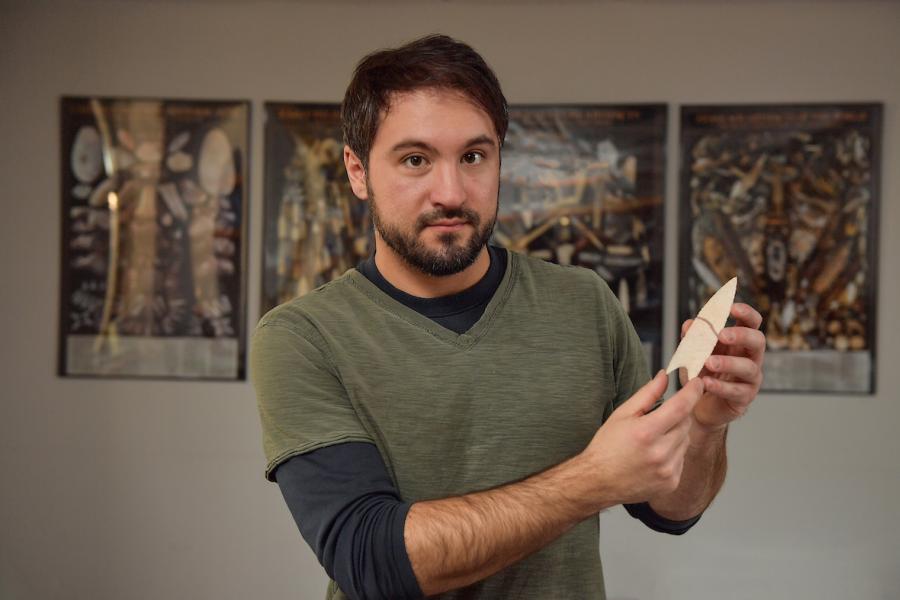The Environmental Science and Design Research Institute (ESDRI) is dedicated to research and investigations within natural, human, and built systems, as we develop innovative knowledge, products, and solutions to address local, regional, and global issues.
Students: The institute aims to build research skills in students, in order to cultivate well-rounded, critical thinking professionals. ESDRI recognizes the professional and personal importance of students having foundational research and creative skills and knowledge, which is facilitated through a variety of workshops, speakers, service projects, symposia, special events, Q&A sessions, laboratory tours, and more. The institute supports undergraduates ŌĆō academically and financially ŌĆō through its Fellowship Program, in hopes of mentoring a new generation of scholars.
Faculty: ESDRI provides many opportunities for faculty to advance their research and facilitates multidisciplinary collaborations, procuring intramural and extramural funding, and working with qualified student researchers. The institute engages a broad range of talented scientists, designers, and practitioners, spanning many academic disciplines, fields, and programs. The institute proudly hosts an annual symposium/forum, with an ever-evolving theme, which draws from KSU faculty, students, and many of our community partners.
Colleges represented within ESDRI include:
- Aeronautics and Engineering
- Applied and Technical Studies
- Architecture and Environmental Design
- The Arts
- Arts and Sciences
- Education, Health and Human Services
- Nursing
- Public Health
By empowering environmental research, the institute aims to foster change by drawing from robust, well-informed science and design or extrapolating on the research ourselves. ESDRI encourages students, faculty, and the greater community to understand and leverage the interacting geological, biological, human, economical, cultural, and social systems around us. These overlapping systems impact and regulate the availability of resources (e.g. pure water, clean air, and food), sustain diversity of life on Earth, promote well-being, and affect all of us in our daily life.
Environmental Science and Design Research Institute/We acknowledge that the lands of ║┌┴Ž═° were the previous homes of people who were removed from this area without their consent by the colonial practices of the United States government. Before removal, these groups created networks that extended from Wyoming to the Florida Coast and Appalachia and to the northern reaches of Lake Superior. These societies included people of the Shawnee, Seneca-Cayuga, Delaware, Wyandots, Ottawa and Miami. We honor their lives ŌĆō past, present, and future ŌĆō and strive to move beyond remembrance toward reflection and responsibility, through honest accounts of the past and the development of cultural knowledge and community.

They have gone above and beyond to keep ║┌┴Ž═° moving forward during the pandemic, and now they are being honored for their dedication and hard work. Kent State President Todd Diacon recently notified nine faculty members and 14 staff members that they have received special awards for their work and service.

Climate change is a complex problem with no easy answersŌĆöand everything at stake.

Two significant environmental issues our nation faces today include invasive plant species and a lack of sustainable materials. Invasive plant species are detrimental to host environments for multiple reasons. Kent State students are working to turn invasive plant species into a sustainable material that can help protect the environment through the 2022 Biodesign Challenge, a course and national competition to create sustainable solutions to real world problems.

The central component of the Grind2Energy systems at ║┌┴Ž═° are larger versions of the in-sink garbage disposals found in many homes. The difference is that at Kent State, these units arenŌĆÖt disposing of food waste, but processing it with a purpose - as the first part of a highly sustainable innovation that creates energy and high-grade fertilizer.

If you see Alicia Costello in your area, give her a wave!

Scott Sheridan, Ph.D., professor and chair of the Department of Geography, in the College of Arts and Sciences at ║┌┴Ž═°, was recently selected to become an inaugural American Geophysical Union (AGU) LANDInG (Leadership Academy and Network for Diversity and Inclusion in the Geosciences) Academy Fellow.

Many wonder if climate change is the reason weŌĆÖve had 'weather whiplash' or day-to-day dramatic changes from hot to cold or cold to hot. As a climate scientist, Cameron Lee, assistant professor in the Department of Geography in the College of Arts and Sciences at Kent State, gets asked this question a lot. Looking beyond just the average temperatures and statistical means, he decided to take a more analytical look at weather whiplash and add to a growing body of climate change literature examining temperature variability trends.
Timothy Assal, Ph.D., assistant professor in the Department of Geography, was awarded a grant as a co-principal investigator on a multi-institutional project, ŌĆ£Vulnerability of lower-ecotone aspen forests to altered fire regimes and climate dynamics in the northern Great BasinŌĆØ (a three-year $299,842 total award with $89,600 going to Kent State), which is funded by the . This collaboration includes the United States Geological Survey in Boise, Idaho, Utah State University, and the United States Bureau of Land Management.

Kent State's Jonathan Maletic, Ph.D., in the Department of Computer Science and Tara Smith, Ph.D., in the College of Public Health are the winners of the 2021 Faculty Outstanding Research and Scholarship Awards (ORSAs). The ORSAs recognize the hard work and dedication of faculty members who have been with Kent State for more than 10 years. Read more about the winners and how they display the highest levels of scholarship.






